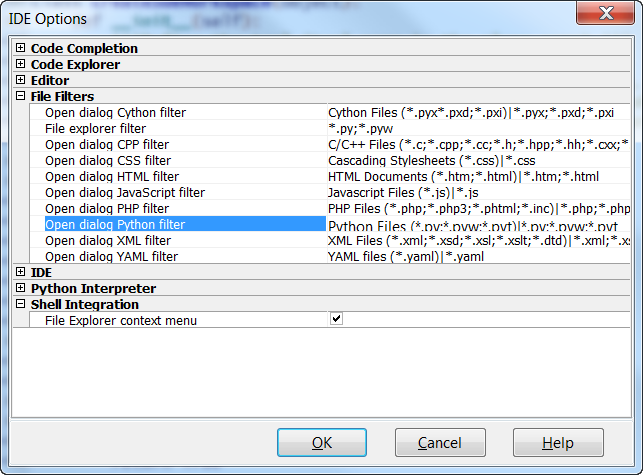

- #Pdfwriter module python pypi pdf
- #Pdfwriter module python pypi install
- #Pdfwriter module python pypi upgrade
- #Pdfwriter module python pypi password
- #Pdfwriter module python pypi free
Other values are “ A3”, “ A5”, “ Letter,” and “ Legal.” pdf=PDF(format='A4') #page format. As you notice, the default value is “ A4”. Secondly, you can change the unit of measurement if you prefer units in “centimeter,” “points,” or “inches.” The default value is “mm: millimeter.” pdf=PDF(unit='mm') #unit of measurementįinally, the last parameter is the page format. ( It is case insensitive.) pdf=PDF(orientation='L') # landscape If you want to change it to landscape, use “ L” as orientation value. It is possible to use different directions like “ landscape” and “ portrait.” The default value of orientation is portrait. The FPDF constructor has a few parameters that affect the result.
#Pdfwriter module python pypi pdf
First, we need to create an object of the PDF class. class PDF(FPDF): pass # nothing happens when it is executed.Īfter creating a class, it is time to create our first pdf page. For the moment, we use the pass statement, which is a null operation. Initially, we create a class to use the FPDF library. Test your installation by importing it in the Python interactive. FPDF is a PHP class that allows generating PDF files with pure PHP. The ReportLab library is available on PyPI. We import the FPDF class from the “fpdf” package.
#Pdfwriter module python pypi install
python -m pip install fpdf # installation from fpdf import FPDF # fpdf class :param inputs: input files :param output: output file :param delete: delete input files after completion if true ''' writer PdfFileWriter() if os.path.isfile(output): ans input( 'The file 's' already exists. from PyPDF3 import PdfFileWriter, PdfFileReader from PyPDF3.pdf import PageObject pdffilenames 'outmitry.pdf', 'outcdg.pdf' input1 PdfFileReader (open (pdffilenames 0, 'rb'), strictFalse) input2 PdfFileReader. def pdfmerge(inputs: str, output: str, delete: bool False): ''' Merge multiple Pdf input files in one output file. PyPDF2 can retrieve text and metadata from PDFs as well. If I understood you correctly, you want to stitch two pages this way: The pyPDF3 module allows you to do this. It can also add custom data, viewing options, and passwords to PDF files.
#Pdfwriter module python pypi free
If you don’t have it yet, please check this link to install it. PyPDF2 is a free and open source pure-python PDF library capable of splitting, merging, cropping, and transforming the pages of PDF files. Let’s start with importing the “ FPDF” package. Admittedly, there are a lot of alternatives for creating a pdf in Python, but I prefer working with PyFPDF due to its simplicity. The example/ directory furthermore contains some nicer, more readable Python wrappers that make toying around with NEC a less painful experience. PyNEC/ contains a wrapper of the C++ interfaces (Python module name: PyNEC). "Thanks for creating a great pdf library, I tested out several and this is the one that was best able to work with whatever I threw at it.PyFPDF is a small and compact PDF document generation library under Python. necpp/ contains a wrapper using SWIG of the C interface (Python module name: necpp).

I decided to try writing a quick Python program with pikepdf to automate and it "just worked". Integrates with Jupyter and IPython notebooks for rapid development Modifies PDF/A without breaking PDF/A complianceĪutomatically repairs PDFs with internal errors !Ĭreates PDFs that pass PDF validation tests Save and load PDF compressed object streams (PDF 1.5)Ĭreates linearized ("fast web view") PDFs
#Pdfwriter module python pypi password
Save and load password protected (encrypted) PDFs FeatureĮditing, manipulation and transformation of existing PDFs Anyway, my script seems to be running again. But now I really am confused, wether now I use python3 or 2 :D.
#Pdfwriter module python pypi upgrade
It does not have the capability to render a PDF to image. I think I solved the problem with those steps: brew upgrade sphinx-doc pip3 install -U sphinx pip3 install sphinx-rtd-theme pip3 install -user rst2pdf. Some knowledge of the PDF specification may be helpful.

This library is similar to PyPDF2 and pdfrw - it provides low level access to PDF features and allows editing and content transformation of existing PDFs. By default, when you will execute the CLI, the default compression level is 6. Changed in version 3.8: Add a new command line interface with a usage. Once executed the gzip module keeps the input file (s). Pikepdf is documented and actively maintained. The gzip module provides a simple command line interface to compress or decompress files. # Elegant, Pythonic APIįor users who want to build from source, see installation. Say it out loud, and it sounds like "pikepdf". Python + QPDF = "py" + "qpdf" = "pyqpdf", which looks like a dyslexia test. Pikepdf is based on QPDF, a powerful PDF manipulation and repair library. Pikepdf is a Python library for reading and writing PDF files.


 0 kommentar(er)
0 kommentar(er)
